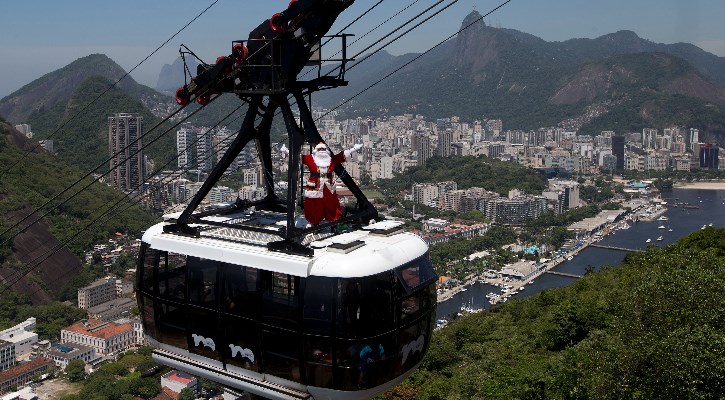
When investors think of emerging markets, China looms intimidatingly large. It’s the world’s second largest economy, after all, and generates media attention to rival that of the US.
From regulatory crackdowns to trade wars, what China says and does matters for global stocks. It’s also around 35% of the MSCI Emerging Markets index, so if China has a good (2020) or bad (2021) year, then the rest of the complex moves with it.
Other EM countries tend to get overlooked, though, so that’s why we’re focusing on countries apart from China in this article. How have other emerging markets fared in 2021, and what’s the biggest issue facing them in 2022?
Emerging markets are a diverse bunch, so it’s hard to generalise about countries as geographically and economically dispersed as Russia and Indonesia.
Still, it’s fair to say that emerging markets overall have been weak this year, with the MSCI EM index in negative territory, down around 4% in the year to the end of November, against a gain of 18% in 2020--fuelled largely by China’s post-Covid-19 bounce. (The equivalent Morningstar EM index is also in negative territory).
That said, there have also been pockets of outperformance, such as India, Russia, Saudi Arabia and the United Arab Emirates (UAE). Some key EM countries have struggled this year, including China and Brazil, which continues to struggle with the coronavirus crisis and the political fallout. Morningstar Brazil is set to end the year down nearly 18%, following a similar fall in 2020.
India's Boom
Frontier markets, which include Vietnam, Kazakhstan and Morocco, fared much better, rising 18% after an underwhelming 2020.
At roughly the mid-point of this year, and as part of our emerging markets special report week, we looked at the performance of individual countries in Asia. India and Taiwan stood out as the only countries in that group that had posted double digit returns, of 15% and 18%, respectively.
India, which is in the middle of a stock market boom, has powered ahead towards the end of the year. Morningstar India is up nearly 30% in dollar terms. Morningstar Taiwan isn’t far behind with a gain of nearly 25% in the year to date. India’s strength was puzzling at the time, given the country was hit by a formidable second wave in Covid-19 infections and experienced an oxygen supply crisis. But the drop-off in the daily infection rate, from a staggering 400,000 a day in May to around 5,000 now, suggests that the markets were right to look ahead, even if record highs for the stock market this year seemed surreal in the context of the human tragedy, with nearly 35 million cases recorded in total.
The turnaround in the energy narrative from last year and subsequent surge in oil prices has also benefited Russia after a weak 2020--the Morningstar index is up nearly 20% in US dollar terms after a 12% fall last year.
Can EM Close The Gap?
Aside from the obvious threat of new coronavirus variants, the valuation disconnect is one of biggest issues facing EM investors. Inflation is a worry, but less so for commodity producing nations, which are being paid more for scarce resources like oil, natural gas and copper.
Central banks in EM countries are also able to push up rates more freely than their counterparts at the Fed, Bank of England and ECB, where citizens carry much more personal dent. The traditional argument for emerging markets is that they are “decoupled” from developed markets and are therefore good for diversifying a portfolio. That has held true during the coronavirus era but for the wrong reasons. Developed markets, especially the US, have consistently outperformed their emerging counterparts.
What EM investors can hope for in 2022 is a bout of “recoupling”, then, in the form of at least some sort of catch-up. That may be at the expense of market like the US, where President Biden is about to head into a perilous 2022.
Of course, much depends on China getting back on course in 2022 and what happens to the US dollar if the Fed starts raising interest rates. Nitin Bajaj, portfolio manager, of Silver-rated Fidelity Asian Values investment trust (FAS) is backing small-cap value stocks to lead this charge. “Valuations remain very bifurcated and many small-cap value stocks continue to trade at significant discounts relative to large and small growth companies,” he says.
Buy the Weakness
William Lam and Ian Hargreaves, co-heads of Invesco’s Asian and emerging markets equity team, are optimistic despite the slow vaccine rollout and economic impact of the pandemic lingering in many Asian countries.
“Valuation discrepancies between and within markets and sectors remain wide, with scope to lean into areas of excessive pessimism, while avoiding frothy areas of the market,” they say.
Shore Capital director Ben Yearsley also argues Asia is a region to watch in 2022, with valuations much more realistic than many developed markets after this year's weakness.
Another historical argument in favour of EM was that countries’ economies were growing faster than in in the advanced world.
John Malloy, manager of the RWC Global Emerging Fund and Frontier Market Equity fund, expects this narrative to reassert itself in the coming years as emerging markets rebuild after the pandemic.
“While 2022 may not mark a complete end to the Covid-19 pandemic, we think it could be the last year when virus-related restrictions are the main driver of economic fluctuations in most EM economies,” he says.
Could 2022 be the year of emerging markets? That prediction has fallen flat many times before. So too has the perennial assertion that “US tech has peaked”. After a rough period for Latin America, the region could yet shine in 2022.



























